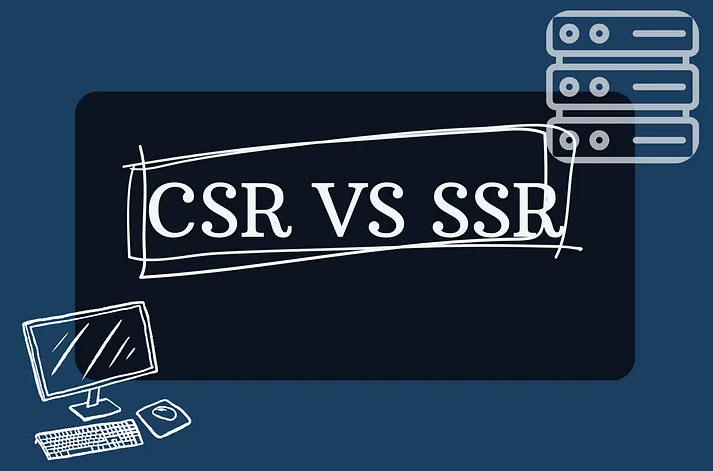Rendering is one of the most crucial decisions in modern web development. Choosing between Client-Side Rendering (CSR) and Server-Side Rendering (SSR) can significantly impact your site’s speed, SEO performance, and user experience. Each approach has its benefits and trade-offs depending on the goals of your project.
In this article, we break down the differences, use cases, and when to choose one over the other.
What is Client-Side Rendering (CSR)?
In client-side rendering, the browser loads a minimal HTML shell, and JavaScript takes over to render the rest of the page dynamically. Frameworks like React, Vue.js, and Angular often default to CSR.
How It Works:
- The browser receives a mostly empty HTML file.
- JavaScript is downloaded and executed.
- The content is then rendered dynamically in the browser.
Advantages:
- Rich, interactive experiences without full-page reloads
- Better for apps that behave like native applications (e.g., dashboards)
- Reduces server load
Disadvantages:
- Slower time-to-content (blank page until JavaScript loads)
- Poor SEO unless extra steps like pre-rendering or hydration are used
- Increased reliance on client-side performance and JS availability
What is Server-Side Rendering (SSR)?
With server-side rendering, the server sends a fully rendered HTML page to the browser. Frameworks like Next.js or Nuxt.js support SSR out of the box.
How It Works:
- The server processes the page and sends complete HTML to the client
- The browser renders the page immediately
- JavaScript may enhance interactivity afterward (hydration)
Advantages:
- Faster initial load and better perceived performance
- Excellent for SEO since bots see the full HTML
- Good for static content or marketing pages
Disadvantages:
- Higher server load per request
- Slower transitions between pages unless optimized
- More complex setup compared to traditional SPA
Comparison Table
| Feature | Client-Side Rendering (CSR) | Server-Side Rendering (SSR) |
|---|---|---|
| Initial Load Speed | Slower | Faster |
| SEO Friendliness | Low (without workarounds) | High |
| Interactivity | High | High |
| Server Load | Lower | Higher |
| Complexity to Implement | Easier | Moderate |
| Use Case Suitability | SPAs, dashboards | Blogs, e-commerce, landing pages |
When Should You Use CSR?
Choose CSR when:
- Your app is highly interactive and resembles a native app
- SEO is not a major concern (e.g., internal tools)
- You want more control over the frontend logic
Example Use Cases:
- Admin dashboards
- Analytics tools
- Messaging apps
When Should You Use SSR?
Choose SSR when:
- SEO is a top priority
- You need fast time-to-content
- You want to ensure accessibility for bots and slower networks
Example Use Cases:
- News sites and blogs
- Product pages
- Marketing websites
Hybrid Approaches: The Best of Both Worlds
Frameworks like Next.js and Nuxt.js allow hybrid rendering: you can statically generate some pages (SSG), server-render others (SSR), and fall back to CSR for highly dynamic parts.
This flexibility lets you optimize performance and SEO without sacrificing interactivity.
Conclusion
Understanding the difference between Client-Side Rendering and Server-Side Rendering is essential for building scalable, performant, and discoverable web applications. The right approach depends on your project’s goals, whether you prioritize speed, SEO, or interactivity.
Choose wisely, and where possible, consider hybrid rendering to strike a balance between user experience and performance.
